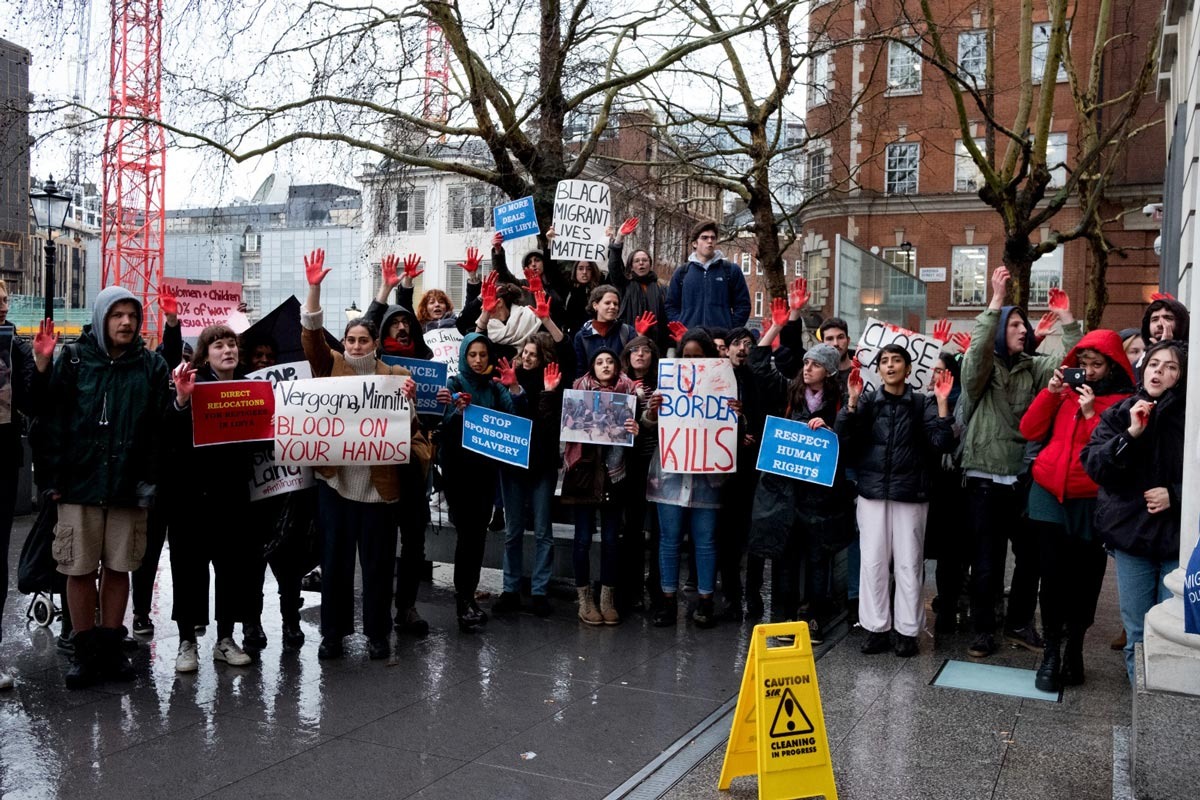The following blog piece on ‘migrant labour’ in Italy was written by plan c member, Richard B. You can read the first instalment here.
Notes on labour
The very term “migrant labour” can be misleading, as it melds together both the mobility of the workforce within Italy for seasonal agricultural work and the birthplaces of the members of that workforce being outside of Italy. While these two aspects do often combine within the same workforce, this is contingent, and does not explain the necessity of the second aspect for the first. That is, the workforce, the labour-power (in Italian, the same term) which is used for the agricultural sector (among others) is non-EU. Much of the agricultural work in Eastern Sicily is performed by Romanian and Albanian women, whereas in Western Sicily the dominant groups are Moroccan, Tunisian and Senegalese. Of these, it is the Senegalese workforce – flanked by other West African nationalities – which has swelled in the past few years, thanks for the opening up of the Libyan route across the central Mediterranean following the fall of Gaddafi. This is, without doubt, not only a “migrant” workforce, but a Black one. It is Black labour which is now holding up the Italian agricultural sector. The importance of this distinction is not to undermine the Arab or Eastern European workforces, but to note the particularity of Blackness and the exploitability of Blacks within the world economy, and how this is being utilised to overcomes aspects of the Italian state’s own national economic crisis. To be more precise: accidentally or otherwise, the racial division of labour within food production is a quite direct response to instability in the financial sector.
In this way, the entrance of the new Black workforce has allowed the emigration of the young Southern proletariat without precipitating the total collapse of the Italian agricultural sector. The African workforce sends the majority of any wages (after the most basic of living costs) back to families in Africa; similarly, the Southern Italian workers across North-Western EU states save their poorer, wage-depressed relatives from needing to support them in Italy. Since 2016, Italy has seen net emigration: this is not an ironic coincidence, but interrelated. The immigration allows emigration without collapse of a sector that not only include cheap olive oil and wine, but also the oranges that produce Fanta (Coca-Cola).
The working conditions of Black labourers in Italy cannot get much worse. The small shanty towns set up for the tomato, olive and orange harvests across the Italian South are disconnected from utilities, legality, trade union protection. There is no enforcement of the lowest ethical or legal norms for employers. Workers do not even work every day, as the wages are so low that they often refuse the offers from local farmers, only to find they are pressured into accepting the low wages as the labour supply is plentiful; furthermore, not maintaining the same workers all the time allows the employers to shirk labour laws in case of rare checks by the authorities. Accounts of the horrendous conditions in these labour camps, from flimsy tents in the mud for male African in Western Sicily to routine sexual abuse and rape of Eastern European women in Eastern Sicily, are plentiful enough that they do not need repeating here. The question is how these situations can be altered. Media attention has proved a weak and near-futile tactic.
The most well known resistance was mounted by Yvan Sagnet, a Cameroonian student-turned-trade unionist who led important struggles in 2011, and continues to campaign on the legal front, pushing for the introduction of harsher – and the enforcement of existing – labour laws. The situation has not improved much however, and organisation has passed over from the mainstream unions (FIOM, CGIL, UIL) to the grass-roots ones (USB and COBAS). Last week, 200 workers in Foggia entered local church during mass in a silent protest, with a sign reading “we are workers, not mince meat.” Worker organisation is, however, not only difficult but threatens the very future of the workforce. Automation is a constant threat. In the harvests, a careful balance is struck between the costs of planting the vineyards and olive groves densely and employing human labour, or planting them further apart, decreasing the yield allowing access for farm machinery. If the costs of labour-power rise, those farmers with some capital reserves will move over the mechanised harvesting. Of course, not all farmers are so blessed, but the larger and more powerful companies will do so.
In the South the Black labour force is supporting the agricultural sector, many of them asylum seekers or refugees, or at least people who have recently passed through the hostel system for asylum seekers (often it makes little difference for working conditions whether a Black worker has documents or not; a recognised refugee can be treated the same as someone with an expulsion notice). In the North, the well known struggles in the logistics sector are dominated by North African workers, and include Senegalese and Eastern European workers; Italians are a minority. When a North African worker was killed last year after a scab drove into a picket with a car, there was not an Italian in the entire striking workforce. Again, it is the grass-roots unions which have organised and won important struggles in the logistics sector.
The Black labour force is also vital to the sex trade. Again, there are innumerable articles now within the genre of “Palermo noire”, describing the cross over between Nigerian and Sicilian organised crime, human trafficking of women, narcotics, guns, etc. All the tropes of the libido are invoked, as much as the journalists attempt to underline the horror of the situation. Black sexual labour in Sicily is carried out under conditions as exploitative, and even more dangerous, than Black agricultural labour. Murder and violence is frequent, choice is almost (if not entirely) non existent. Women are ransomed and beaten into the labour force. And while the increasing supply of trafficked Nigerian women is well known, the increasing demand for sexual labour by European men is hardly mentioned. It might be argued that supply is meeting a prior but unrealised demand; there is however also an uncomfortable possibility that the demand has increased along with anti-migrant rhetoric, and continuing othering of Black Europeans and, indeed, Black Europe. The racial division of labour cuts across the female and male workforces, and the manufactured hatred for Blacks encourages the exploitation of both.
Both the male and female Black workforces are reproductive, in the sense that both are heavily involved in the reproduction and valorisation of the Italian workforce. As schematic as this might be, this holds true for the sexual workforce in that it allows for the violence of the Italian male workforce to be meted out on an Other and redirect it away from Italian men and women; the sex trade is also enabling the flow of capital out of the Italian middle class (or, better put, the salaried classes) and into the informal sector, in the same way that the drug trade does. From the informal sector it works its way up the chain again into the Mafia bourgeoisie, whether white or black. The male and female Black labour force is also reproductive in that it performs labour which saves time for Italian workers, enabling them to go to work. The most well known example is cleaning houses and offices, and looking after the elderly, jobs which have been performed in Italy by women of colour since the 1970s (as much as Italians generally claim that immigration began in the 1990s.) These jobs are increasingly performed by Black men as well as women. Other urban jobs performed by the Black workforce (particularly outside of the agricultural season) are washing cars, carrying and packing at supermarkets and informal markets, cleaning in kitchens, and informal construction work. It is normal for Black men to be paid €20/day for such work, or less. The low wages of this work allows for a range of services to be sold to the Italian salaried classes at lowered prices, ameliorating stagnant Italian wages. The racial division of labour functions as a pressure valve, beating back the complaints of the white working class not only in providing a scapegoat for their animosity, but also in compensating for depressed incomes.





